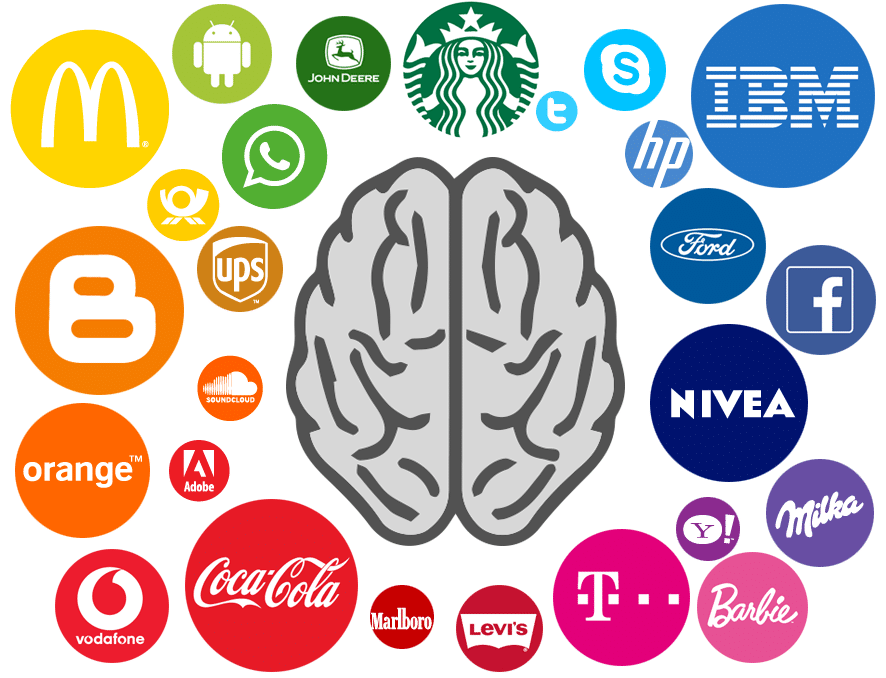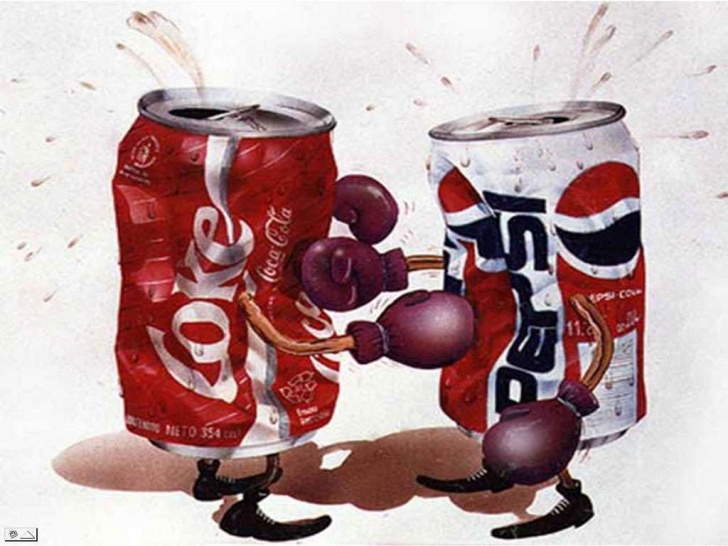A Neuromarketing analysis of consumers’ purchases behaviour, to understand what motivates a person to buy certain products in respect to others.
The professor Kevin Lane Keller in one of his publications for the American Marketing Associations establishes how the purchase motivation that drives consumers is determined by the intrinsic benefits of buying the product and what it’s defined as the relationship with the profit/loss within the purchase.
In this writing, Mr K.L Keller defined the Somatic Marker Hypothesis by referring to the relationship between emotions and decision-making.
In fact, following his words, we can establish two options or paths that human beings have while taking a decision; the outer world (perceived through the senses), and the inner world (created through our thoughts and images that represent our individual reality). This means that the situations we live are conditioned by the various thoughts that our brain develops around it, and in this way, a consequent response is created. Here we refer to emotional responses that involve our own physiological (unconscious) and cognitive components, arising from our experiences.
As mentioned above, in general, human beings act guided by the benefits that arise as a consequence of their actions. As stated by Professor Keller, benefits are the personal value that consumers give to the attributes of the product or service, that is to say, what consumers think the product or service can do for them.
Purchases motivations differ in each person and with these, changes what is the profit and loss profile. As we emphasized, many times the consumer does not act by opting for the rational decision but on the contrary for the one that he considers most satisfactory within this subjective situation determined by his own analysis of costs and benefits. Therefore, for each purchase decision, the buyer will go against some benefits and costs derived from his decision.
The author divides these benefits into three types according to the underlying motivations for which they relate:
- Functional benefits are associated with the intrinsic benefits of consuming products or services and generally correspond to attributes related to the product. These benefits are often linked to motivations, such as physiological and safety needs and imply a desire to eliminate the problem or avoid it.
In this case, decision-making is mainly determined, by instrumental benefits such as quality and safety of financial savings instead of characteristics of social types or about the aesthetic beauty of the object. For example, buy a vacuum cleaner. In most cases, it is free of any other type of benefit other than instrumental once, derived from its purpose of use. In this case, the subject with the purchase of the product will gain the function of its use (for example, cleaning the house) therefore it will be able to suppress the benefits related to aesthetic beauty, the brand or in adopting the most fashionable product in the market and dwell only on the task that the product allows you to perform. Here the subject will aim and benefit from the removal of a problem (dust) and therefore facilitate the purchase decision in terms of cost (monetary, time and convenience of purchase).
- The experiential benefits are related to how it feels using the product or service and also usually correspond to the attributes related to the product. These benefits satisfy experiential needs, such as sensory pleasure, variety, and cognitive stimulation. For this type of motivation, the subject places preferences on the sensations caused by the objects/services instead of their more functional characteristics. We can say that these simulations are driven by the satisfaction of an emotional benefit, derived from the sensation of using a product or service. For example, a person who chooses to have coffee at Starbucks instead of a normal local coffee shop. Probably more than coffee, which can also be considered as a functional benefit (awakening), apart from an experiential one (enjoying the taste), in this case, what drives the person to this decision are the experiential benefits derived from consuming a coffee at Starbucks; such as the sensations derived from the service, the surrounding environment and the indirect benefits derived from it, such as Wi-Fi, space to work, interactions with other people who share the same values. In this case, with regard to the experiential motivations, the subject will be able to repress the losses derived from his choice, such as cost, time (understood as waiting for coffee consumption); in favour of the benefits derived from it (the sensations and emotions evoked by having a coffee in that environment, with that service and surrounded by those people).
- Finally, there are the symbolic benefits. These are connected with the more extrinsic advantages of the consumption of products or services. They generally correspond to attributes not related to the product and relate to underlying needs. These are determined by social approval or personal expression and outward-directed self-esteem. Therefore, consumers can value prestige, exclusivity or fashion of a brand due to how it relates to its self-concept. This category refers to benefits not related to the product and interconnected with more stereotyped reasons about social status, the self-esteem of the subject and the acceptation of a social group. Luxury items often fall into this category, like owning a Louis Vuitton bag. The purchase of this product, in most cases, is not related to a functional benefit (the need for a bag) and can only be considered partially connected with the experiential benefit (the feeling of use) in fact in most cases such purchase is driven by a higher profit; Possessing this object defines social status and allows the subject to have a better perception of himself. To achieve this benefit, which disconnects from the product by rooting the vision that the subject has of himself, he will be able to sacrifice a lot in terms of monetary cost, time and convenience in the purchase with the ultimate aim of taking advantage of the benefits of owning this product such as self-esteem, exclusivity and personal prestige.
That being said, we are now perfectly aware of how many components can determine purchase behaviour. Understanding the benefits that correspond to every item’s purchase can make us reflect on; why we buy what we buy?
Is this object useful? Am I buying it for its usefulness or simply because a friend of mine has the same model?
The marketing approach in recent years has placed more and more emphasis on stimulating not only functional benefits, which are more basic, but instead on experiential and symbolic ones, that are proved to have more impact on humans mind.
Consumers in most cases are pushed to buy products because of the experience resulting from the purchase or the consequent social status given by owning the product.
We can give two common examples related to this:
- CocaCola vs Pepsi experiment conducted in 1975 where researchers first asked 76 volunteers which were their favourite beverage between the two and then conducted a blind test experiment asking to the same audience to taste the drinks and vote their favourite one. The researchers found that, in most cases, where Coca-Cola users had selected Pepsi during the test with their eyes closed, they would still not change their preference afterwards.
- Apple products. In recent years many goods smartphone have been launched on the market. Despite that, some of them have equal or sometimes even better characteristics respect to the iPhone the apple symbol product maintains its leadership in the phone market. At every launch, thousands of people around the USA are ready to stay for hours standing in kilometric ques waiting to see the new creation.
These two, of many examples that we could make, help us understand that many times we are not rational in our purchase decisions and how strongly our choices are affected by emotions, conceptions or external stimulations.
These multiple factors that intervene in our mind, forming the perception of the Brand in it, are going to build what is described by Keller in his study as brand equity. Brand Equity can be explained as a premium value that a company generates from a product with a recognizable name when compared to a generic equivalent.
So, following the previous definition, Customer-based brand equity occurs when the consumer is familiar with the brand and holds some favourable, strong, and unique brand associations in memory. We can affirm then, that Customer-based brand equity happens when there is Brand Knowledge, defining the latter as the sum of the attributes that determine the identity of the brand, such as Name, Symbol, Sign, Design etc…
Keller demonstrated how the Brand Knowledge is formed from different factors:
- Brand Awareness: That is related to the strength of the brand node or trace in memory, as reflected by consumers’ ability to identify the brand under different conditions (Rossiter and Percy 1987). The latter is, in turn, made up of two main factors; Brand Recognition (relates to consumers’ ability to confirm prior exposure to the brand when given the brand as a cue) and Brand Recall (relates to consumers’ ability to retrieve the brand when given the product category, the needs fulfilled by the category, or some other type of probe as a cue).
- Brand Image: Defined as the perceptions about a brand as reflected by the brand associations held in consumer memory. Brand Associations are the other information nodes linked to the brand node in memory and contain the meaning of the brand for consumers.
Brand Associations in turn can be distinguished in three major groups: attributes, benefits, and attitudes.
- Attributes: As reported by Myers & Shocker in 1981 are those descriptive features that characterized a product or service. Attributes can be distinguished into product-related (physical composition) and non-product-related (price, packaging etc…).
- Benefits: As stated previously these are personal value consumers attach to the product or service attributes-that is, what consumer thinks the product or service can do for them. We have mentioned earlier how this category can be classified.
- Brand Attitudes: Are defined as consumers’ overall evaluations of a brand. (Wilkie 1986).
Learn more about the concept of brand equity in this article 👉 What Is Brand Equity & How to Build, Maintain & Measure It
All these definitions can help us understand the multiple interconnections of thoughts and information that can be created in our mind about the conception of a brand or a product when making a purchase decision.

So how all this is it connected to marketing?
We should now stop and think about how much the value and perception of a Brand, determines our purchase decisions.
If we understand that, as humans, we are irrational; and that emotions, experiences and perceptions have a more dominant role than rational material utility during the purchase process, then we will notice the power of marketing, branding and advertising in conditioning our decisions and so our surrounding reality.
We need to be conscious of the thousands of stimuli that are hitting us in the everyday life. Being aware that we are inevitably conditioned by our surroundings it makes us more perceptive of our brain’s actions-reactions mechanisms.
In a world governed by advertising when you don’t buy the product you inevitably become the product!


